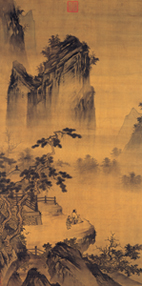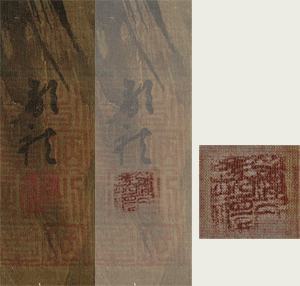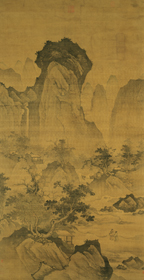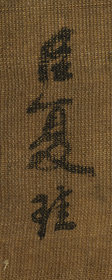TELDAP Collections
| Tracing the Che School In Chinese Painting |
|
Search lost names and trace true identities in the tides of change! The signature on a painting is how we identify an artist. These names may be true or false, or even missing altogether, hiding secrets awaiting to be unraveled! There are more than seventy paintings here from the Sung, Yüan, and Ming dynasties in China, and even works from Korea and Japan. They will take you on a journey tracing how the Che School went from a local style of painting to become the mainstream, and was even exported, before it finally succumbed to the forces of history, only to be uncovered later and its evolution rediscovered. With a diverse and stylistically creative layout, practical image search, interactive timeline, and high-resolution appreciation of the original works, you can go on an in-depth journey of exploration in art. The” Che School” does not refer to a particular institution or atelier of painters, but is instead a term used to designate a group of artists who worked in a similar style in China during the 15th and 16th century, representing one of the most important painting manners of the early Ming dynasty. The Che School is named after the area of Chekiang, where it was centered, and it involved professional artists from neighboring Fukien, Kwang-tung, and other provinces as well. Origins of the Che School can be traced back as early as the court painting of the Southern Sung period(1127-1279), and more specifically to the elegant, lyrical tradition developed by Ma Yüan and Hsia Kuei. The Southern Sung ended with the invasion of the Mongols, who established the Yüan dynasty in China. During almost a century of their reign, the Ma-Hsia tradition of court painting spread among local art circles to form an important undercurrent that would be revived with much of its previous glory following the establishment of the succeeding Ming dynasty(1368-1644). The founding of a new dynasty naturally required an enormous number of paintings to decorate the palaces and buildings at court. A stable society and strong economy in the Ming also stimulated flourishing trade in painting, and these factors all helped to promote the formation of the Che School and its development. Che School painters, with strong support in the private market and patronage from the imperial family, flourished in local areas as well as the painting academy at court. These artists responded to a wide range of functions and needs, creating a variety of styles and subjects done in a lively manner. The period from the Hsüan-te to Hung-chih reigns(from 1426 to 1505)represented the golden age of the Che School, with such painters as Tai Chin and Wu Wei creating expressive forms of landscape and figure painting, respectively, while wielding the brush with great skill and freedom. Painters of the later Che School worked on the foundations of these two great masters to develop an even more unbridled and untrammeled manner of brush and ink. In fact, the Che School was able to hold its status as the mainstream in painting circles until the end of the 15th century. However, it was at this time that some artists apparently took the style too far, leading to criticism of it as being coarse and vulgar. Perhaps more importantly, this period also marked the rise of Soochow, in what became known as the”Wu School.” Its growing dominance created a force with which the Che School could not compete, leading eventually to the latter's downfall and passing into the annals of art history. Another clue to the name of the artist lies in the covered seal impression. Special photographic enlargement and enhancement of this part of the work show that the seal is composed of an upper and lower part. As it turns out, the lower part reads, “Chung surname, Ch'in-li.” Evidence from both the signature and seal has revealed the true identity of the artist, being none other than the Ming dynasty court artist Chung Li, whose style name was Ch'in-li. The upper portion, however, reveals a rectangular “scar,” showing where the silk was obviously cut away and replaced. Perhaps this was the location of the actual artist's signature that had been removed.Unfortunately, we cannot recover the missing part, so all we can do is study the painting and its style for clues about the original artist. The large areas of link wash for the rocks wet applications of the brush for the leaves and semi-transparent distant mountains appearing like silhouettes offer concrete evidence to narrow the range of artists.It just so happens that another painting entitled “Landscape” by Chiang Sung reveals the same treatment of the rocks, leaves, and distant mountains. Thus, this work almost certainly came from his hand. The upper right of the Chiang Sung painting also provides supporting evidence in the form of a signature that reads, “Sung-shan” (his style name), along with two seal impressions. Both their size and location correspond to the damaged area on the alleged Hsia Kuei work. Thus corroborating that this indeed was Chiang Sung's signature and seals once appeared many yeas ago! The ”lost names” of Chung Li and Chiang Sung for these two works actually represent a much larger group Che School painters. However, continuous research on the part of scholars is revealing the original status of increasing numbers of such paintings. Whether these works were praised or reviled in the age in which they were made, each now serves as a precious reminder of talented artists behind them. Now with a new understanding of them and their context, we are able to rediscover the rich varied artistic tapestry of Ming dynasty painting.
|

















